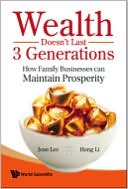Category Books
- Fiction Books & Literature
- Graphic Novels
- Horror
- Mystery & Crime
- Poetry
- Romance Books
- Science Fiction & Fantasy
- Thrillers
- Westerns
- Ages 0-2
- Ages 3-5
- Ages 6-8
- Ages 9-12
- Teens
- Children's Books
- African Americans
- Antiques & Collectibles
- Art, Architecture & Photography
- Bibles & Bible Studies
- Biography
- Business Books
- Christianity
- Computer Books & Technology Books
- Cookbooks, Food & Wine
- Crafts & Hobbies Books
- Education & Teaching
- Engineering
- Entertainment
- Foreign Languages
- Game Books
- Gay & Lesbian
- Health Books, Diet & Fitness Books
- History
- Home & Garden
- Humor Books
- Judaism & Judaica
- Law
- Medical Books
- New Age & Spirituality
- Nonfiction
- Parenting & Family
- Pets
- Philosophy
- Political Books & Current Events Books
- Psychology & Psychotherapy
- Reference
- Religion Books
- Science & Nature
- Self Improvement
- Sex & Relationships
- Social Sciences
- Sports & Adventure
- Study Guides & Test Prep
- Travel
- True Crime
- Weddings
- Women's Studies
Wealth Doesn't Last 3 Generations: How Family Businesses Can Maintain Prosperity »

Authors: Jean Lee, Hong Li
ISBN-13: 9789812797513, ISBN-10: 9812797513
Format: Hardcover
Publisher: World Scientific Publishing Company, Incorporated
Date Published: November 2008
Edition: (Non-applicable)
Author Biography: Jean Lee
Book Synopsis
With 175 family businesses on the Fortune 500 list, from DuPont and Motorola to IBM, there is no doubt that family-run enterprises play an important role in global economic development. Their role is no less significant in China where, in keeping with the country's rapid economic growth, family businesses are emerging in increasing numbers.
Unique characteristics, such as succession, management, staffing, family affairs, strategy planning and governance structure, set family businesses apart from other business types. As a result, they face particular challenges in survival and sustainability.
In this book, three modern Chinese family businesses, including food and beverage company Yeo Hiap Seng, are studied to analyze the problems that family enterprises face. Other case studies include long-standing family businesses in Europe, America and Asia, such as Ford, Kikkoman and Samsung. This book also discusses the changing characteristics of Chinese family businesses, the pitfalls that such enterprises are likely to face, and how they can overcome these pitfalls and achieve sustainable development.
Table of Contents
Preface v
About the Authors vii
Introduction: A Curse Upon Family Enterprises? xiii
Section I Interpreting Family Enterprises 1
Chapter 1 Yeo Hiap Seng: A Typical Case Study of a Family Enterprise 3
Interpreting the Fate of Chinese Family Enterprises Through YHS 3
Family-Oriented Management: Reasons for Both Success and Failure 8
Power Transfer: To Be or Not to Be 12
Internal Conflicts in Family Enterprises: Emotional or Rational 15
Case 1 Yeo Hiap Seng: The Collapse of a Family Enterprise over Three Generations 19
Chapter 2 Family Enterprises in China: The Struggles of the First Generation 41
Governance Structure in Family Business 41
Case 2 Delong: Corporate Governance 49
The Dilemma of Management System for Family Business 66
Case 3 Huanghe: Familial Management Versus Professional Management 72
Section II Family Enterprises Around The World 83
Chapter 3 Development of Family Enterprises in Europe and the US 85
Characteristics of American Family Enterprises 86
Case 4 Ford Motor Company-Wealth Beyond Fifth Generation 93
Characteristics of European Family Enterprises 111
Case 5 Porsche Company - The Outstanding Second Generation 123
Chapter 4 Characteristics of Asian Family Enterprises 137
Family Enterprises of Japan 138
Family Enterprises of South Korea 145
Family Enterprises of Hong Kong 149
Family Enterprises of Taiwan 153
Family Enterprises of Southeast Asia 158
Case 6 Case of Kikkoman: A Combination of Tradition and Modernity 165
Case 7 Samsung Group: From Family Enterprise to Global Brand 177
Case 8 Lee Kum Kee: A Family Enterprise Whose Wealth Lasts over Five Generations198
Section III Development Of Family Enterprises In China 211
Chapter 5 Merchants from Huizhou and Shanxi during the Ming and Qing Dynasties 213
Merchants from Huizhou, Anhui Province 213
Merchants from Shanxi Province 217
Chapter 6 Family Enterprises in Modern China 229
Proliferation of Family Enterprises in China 230
Three-Dimensional Development of Family Enterprises 237
The Characteristics of China's Family Enterprises Bigger and Stronger 240
Case 9 Hope Group: Making Family Enterprises Bigger and Stronger 249
Case 10 Wanxiang Group - Three Axes of Family Enterprise: Family, Enterprise and Ownership 272
Chapter 7 Breakthrough of Chinese Family Enterprises 287
The Axis of Family 288
The Axis of Ownership 297
The Axis of Enterprise 301
Section IV Conclusion 307
Chapter 8 Sustainable Development of Family Enterprises 309
Going Public: A Breakthrough in Capital and Governance 309
Family Committee: Sharing Expereinces 314
Shaping "Enterprise Family Culture": Separation of Ownership and Management 320
Innovation: Source of Longevity 333
Epilogue 345
References 347
Index 351
Subjects
 Careers & Employment
Careers & Employment  Business Life & Skills
Business Life & SkillsBusiness Books
 Management & Leadership
Management & Leadership  Small Business Management
Small Business ManagementBusiness Books
 Small Business
Small Business  Small Business Management
Small Business ManagementSelf Improvement
 Personal Growth
Personal Growth  Success, Motivation & Self - Esteem
Success, Motivation & Self - EsteemSelf Improvement
 See All
See All  Self - Improvement
Self - Improvement
